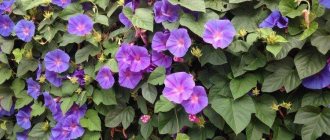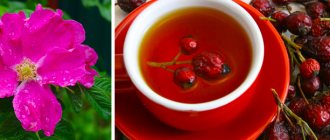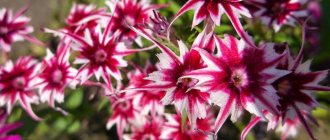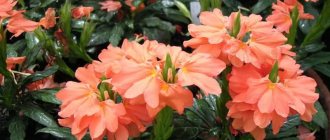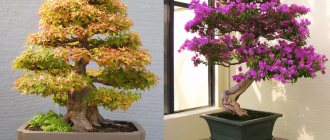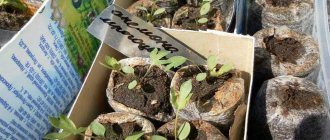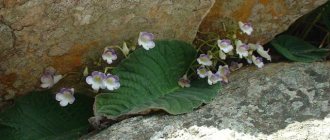Kvamoklit is a plant of the Ipomoea genus from the Convolvulaceae family. It comes from the southern part of Mexico and Latin American countries, as you might guess - it is a heat-loving vine. In our country, it is mainly grown through seedlings with subsequent planting of seedlings in the ground. In the conditions of the southern regions, sowing directly into the soil is possible.
For those who don’t know what we’re talking about, look at the morning glory quamoclite in the photo, and you will immediately fall in love with this charming vine, so much so that you will definitely want to plant it on your site.
Annual liana - quamoclite
The luxurious vine of the plant can not only decorate your site, but also hide some of its unsightly views. For example, planting along a shabby wall or rickety fence.
Planting and growing Ipomoea quamoclite from seeds
This variety of morning glory can be grown from seedlings. Kvamoklit seeds are bought at a florist store, and sowing is planned in March. Before planting, the seed material must be soaked in warm water 6-8 weeks before planting. The soil is peat, the seeds are placed 1 cm deep, covered with soil and watered with warm water.
The containers in which the seedlings will grow should be covered with glass or cling film. It is better to place the boxes in a bright area, where the air temperature will be at least +21°C. Thanks to the greenhouse effect, the seeds will hatch quickly and the seedlings will be dense. For example, the average period during which red morning glory quamoclite will sprout is 2 weeks.
When the first 2 leaves are formed, the seedlings can be planted in separate pots. Perform this process extremely carefully, removing the seedling with a lump of soil so that the roots are not injured. The crop is planted in the garden in May.
How to collect seeds
Experts recommend collecting seeds from the second and third buds. When the flowers wither and a brown box forms in their place, let it dry and open slightly. This will happen in about a month. Pour the seeds from the box into a paper bag and write the name of the variety on it. As already mentioned, morning glory seeds remain viable for three to four years.
Planting Quamoclitus pinnate or cypress vine in open ground
If the seedling method does not suit you, then you can plant the plant directly in open soil. This will even reduce the risk of contracting diseases; the only disadvantage of this solution is the late flowering of the crop.
It is recommended to sow seeds in open soil in May, placing the seed material 0.3-0.5 meters from each other. It is preferable to use loose soil for planting, with the addition of humus, sand and fertilizers.
Plant the cypress vine near a fence or trellis where the morning glory can attach itself and stretch upward as it grows. When planting the plant, add a mixture of organic compost and soil to the hole and around the plant.
If possible, it is better to build a mini-greenhouse for planting. You can also cover the hatched seedlings with synthetic material.
Reproduction methods
The plant has one peculiarity - it does not withstand transplantation very well. This is especially true for the “pinnate” species. Therefore, gardeners prefer to propagate quamoclite by seeds. Any other method will not work. More often the seeds are sown for seedlings. But if the plant is planned to be grown in the southern region, sowing is done directly in open ground.
In warm countries, the plant propagates by self-sowing and sprouts beautifully in early spring. However, this will not happen in the middle zone. The seed material will freeze. Dividing the bush is permissible, but not for quamoclite pinnate. This species does not tolerate transplantation.
Seed ripening occurs late in autumn - in September, October. Oblong shaped seed pods are formed. They are carefully cut and opened. The seeds should be black and large. Store the seed in a paper or cloth bag.
Seeds are planted at different times, as it depends on the growing region. In some places you will have to sow seedlings, but in others you can plant them directly in open ground.
Proper care of Kvamoklit
In order for Ipomoea to delight you with abundant flowering, you must adhere to several rules in caring for the crop. First of all, be sure to build a support immediately after planting the seedlings in open soil to prevent the plants from sticking to each other.
Light
Cypress vines need full sun. Providing it with proper climbing support (so it is not shaded by nearby plants) is often a necessary step in fulfilling this requirement.
The soil
Well-drained soil is the most important condition for good vine growth. The established Kvamoklit vine is quite tolerant of drought and often does without fertilizers. But soil that doesn't drain well will be a problem for your flower.
Watering and fertilizing
For ideal growth, water to keep the soil evenly moist (but do not over-water). Be sure to water the crop abundantly, this is done at least once every 3 days. 1 liter of water is enough for one plant. If summer is marked by drought, then it is better to increase watering. It is also important to regularly feed the vine; it is recommended to water the plant with mineral fertilizer once every 7 days.
You can fertilize with a high-phosphorus fertilizer right before the first bloom to promote flowering.
The flower is easily replanted, so once you do this, you can enjoy this plant year after year. But it’s worth remembering that this is a vine-like plant that grows in different directions. Try to direct the stems in the direction you want and remove unnecessary branches.
Ipomoea quamoclite in landscape design
You can use a mixture of Ipomoea quamoclite colors to decorate gazebos, open terraces, and balconies. A lattice fence decorated with such a plant will look great.
Examples of garden decoration with morning glory
If there are arches on the territory, then feel free to plant the crop next to them to create a real work of art. You can also plant the vine in garden vases located on a hill.
Meet the charming bells
Ipomoea quamoclite looks like an elegant vine. In some cases it grows up to 5 meters in the form of a thick blanket. Each shoot is abundantly covered with succulent leaves that completely cover it. In addition, they can be small or large depending on the variety. Sometimes they are found with openwork bright green leaf plates.
With the onset of summer, many flowers of the following shades appear on the green carpet:
- Purple. Delicate miniature gramophones come in plain colors or with a white border at the tips of the petals.
- Reds. The buds can be light or dark tones.
- White. This group includes cream and pale pink morning glory.
- Blue. The color of the blue sky or dark blue sea on a green background is a wonderful combination of shades for the design of a summer cottage.
The morning glory quamoclite shown in the photo allows you to see every detail of the delicate bud. The shape of the flowers resembles a shallow funnel, which in some species is painted white. The size of the buds is about 12 cm. The color depends on the type of plant planted in a particular area. The garden vine begins to bloom with the onset of summer and continues until frost.
After flowering, boxes with large seeds appear, which open over time. Interestingly, seeds that fall near the plant germinate quickly, so several generations grow on the site in one season.
Common varieties of Ipomoea quamoclite
There are not many varieties of quamoclite, but they are all distinguished by their visual appeal and ease of care. Let's look at a brief description of plants.
Quamoclite cardinal or fiery red (Ipomoea coccinea)
It has red star flowers. The height of the crop is up to 3 meters. The leaves are heart-shaped, up to 8 cm long. It begins to bloom a little earlier than related species, but in August it already loses its decorative effect.
Morning glory (Quamoclit lobata)
Under natural conditions it is a perennial, but in our conditions it is grown as an annual crop. The flowers are up to 3 cm in diameter and can change color as they bloom. The variety easily tolerates transplants.
The most striking representatives of the species
Many species and varieties of morning glory pinnate have been bred in the world. But only a few of them grow in Russian gardens:
- Cirrus Quamoclite;
- Ipomoea Red Quamoclite;
- Ipomoea Kvamoklit "Cardinal";
- Lobed Quamoclite;
- Ipomoea "Twinkling Stars" Kvamoklit;
- Slaughter's Quamoclite.
All these varieties are amazingly beautiful, so there are many difficulties when choosing. To figure out what is best to buy for the garden, you need to know a brief description and look at photos of Kvamoklit varieties.
Bladed
In nature, it is found exclusively in the tropics of Mexico. It gained popularity due to its rapid growth. In a year it can reach a height of three meters. The leaves are divided into 3 parts.
The buds have a lobed appearance. An inflorescence can contain flowers of completely different colors. The popular name of this variety is fire flower. For the bright rich color of the petals. Looks very nice in garden decoration.
Morning glory Red quamoclite
Ipomoea Red or fiery Kvamoklit has a special relationship. This cypress vine is distinguished by long, thin vine-like shoots, reaching a height of 3 m. The plant has large, heart-shaped leaves. The diameter of the scarlet tubular buds is approximately 1 cm. Flowering begins in early June and lasts only a month. Then the buds turn black.
Advice! Planting plants at different times allows you to prolong flowering.
Ipomoea quamoclite "Cardinal"
Kvamoklit "Cardinal" Climber is an annual morning glory. It has decorative pinnately dissected leaves. The height of the plant at the end of the growing season is about 2 m. The star-shaped flowers have long tubes. The diameter of the red petals is within 4-5 cm. Flowering begins in July-August and continues until frost.
Attention! This variety of morning glory was created by Dutch breeders.
Morning glory Twinkling stars quamoclite
“Twinkling Stars” is not a variety of morning glory Kvamoklit, but a mixture of different varieties. From the seeds of one packet you can grow flowers with white, red, pink buds. By planting morning glory Kvamoklit, you can get a mixture of colors in one place against the background of green carved leaves, which is clearly visible in the photo below.
Comment! The variety mixture is suitable for growing in pots.
Morning glory sky blue
A plant with incredibly beautiful and unusual flowers, sometimes looking like alien flora. The flowers of this variety are large in size (up to 8-10 cm in diameter), and also painted in a bluish color, unusual for flowers, and grow in clusters of 3-4 flowers.
The shape of the flowers resembles a funnel, and the petals themselves are slightly wrinkled. The plant itself grows up to 5 meters, has large heart-shaped leaves with a smooth surface. This variety has been known since 1830, and is very common in Europe. Suitable for growing in central Russia, but as an annual plant (lives up to 4 years in warm climates);
Morning glory moonflowering
IPOMOEA ALBA
A nocturnal herbaceous plant with a stem height of up to 300 cm. Flowers up to 10 cm in diameter are predominantly white. It grows very quickly, as they say, literally “before our eyes.” Therefore, you need to select supports in time and tie up the vine-like stems.
The peculiarity of this type of morning glory is that its flowers open in the evening and flowering lasts until lunch the next day, after which the moonflower fades. In cloudy weather, farbitis are open all day.
This species is also known for its pleasant sweetish-almond smell. Blooms from late July - early August until the first frost. The plant can “overwinter” in a greenhouse. Very often this vine is planted near the facades of buildings visited in the evening - theaters, bars and clubs.
Morning glory Nile
IPOMOEA NIL, IPOMOEA IMPERIALIS, PHARBITIS NIL
A plant with a stem height of up to 300 cm with large dark green leaves. Cultivated as an annual. The stems branch very strongly and grow faster than other types of morning glory. The shape of the leaves can be heart-shaped or broadly oval.
Flowers up to 10 cm in diameter are funnel-shaped. Color: pink, red, sky blue, lavender, purple and dark blue. They live one day and are open from morning to noon. Flowering lasts from mid-summer to autumn.
Chic gramophones in the country - morning glory kvamoklit
Delicate fragrant flowers are scattered in an original way on a green blanket of leaves.
This is what morning glory quamoclite looks like on a fine summer day. Each bud is held on a long stalk and opens early in the morning at the first rays of the sun. Slowly turning behind it, it closes at midday. If the day turns out to be cloudy, the flowers will fold their petals only when evening comes. Morning glory is native to South America, where it is grown as a perennial plant. In the middle latitudes of Russia it lands every year. The great variety of varieties allows you to create unique landscapes in summer cottages and even on the balconies of city apartments. In addition to annual morning glory crops, many people have fallen in love with African varieties. They reproduce using underground tubers. The plants belong to the so-called caudex morning glory.
Characteristics of Slaughter's quamoclite
K. Slaughter's flower is a garden hybrid of several species, such as feathery and fiery red.
It has its own individual characteristics:
- blade-shaped leaves
- scarlet tubular flowers
- stems more than 1 meter long
The name translated from Latin into Russian will sound like “split” - the plant received it because of the specific shape of the leaves.
The leaves are deeply dissected, with a wide base, the segments form about 7 pairs. The flowers have yellowish-white tubes. This plant is also called cardinal's mantle.
Collecting seeds for sowing
Since morning glory is an annual plant, the seeds must be collected every year after flowering. To do this, you need to remove the dried buds; in the back of each of them you can find a pod with seeds.
Only material collected from mature pods is suitable for sowing. The seed pod is hard and when pressed, it cracks and opens.
The extracted seeds should be spread on paper or a plate and dried for 2-3 days. They need to be stored in a paper bag; germination lasts for 5 years.
